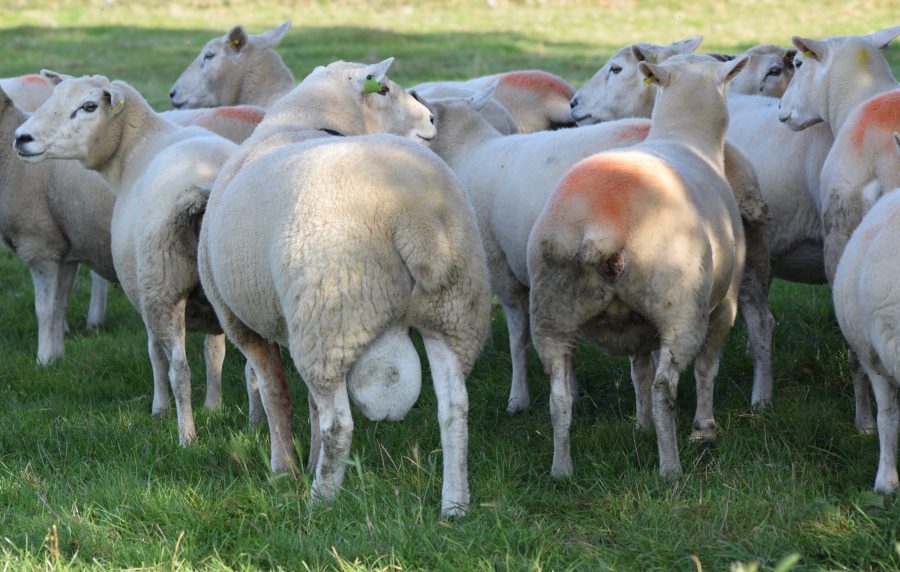Where, oh where, is the autumn flush of grass? Mid October and we are still waiting; while much of the wider South East has had an abundance of grass as we approach autumn, things have really not been quite so rosy for many sheep producers in Kent, particularly in the north west of the county.
Much of the rain enjoyed by others has either slipped off to the north east before reaching this corner of the country or made its way up the Channel, benefitting the south and east of the county. Even though we are accustomed to a bit less rain (there is a little pocket in the Tonbridge area that, in an average year, has 50mm to 55mm less than the surrounding area) this year it has excelled itself, with rainfall for September and the first half of October at just over 30mm, significantly less than the 60mm to 65mm average.
The unseasonably warm weather has compounded the situation, with an average daily evaporation rate of around 2.5mm producing a significant, negative moisture balance with obvious consequences; it really is no surprise that grass is struggling.
Currently it is only fairly heavy dews that are providing sufficient moisture to just keep the grass ticking over; on the plus side, at least it is now green, somewhat different to a month ago. Fortunately, I’ve had some paddocks shut up for a month or so, which should provide a bit of fresh grass for tupping; not a great quantity, nevertheless a decent bite, but this has meant keeping the rest of the stock fairly tight, a very fine balance which has meant selling lambs as stores for the first time.
The absence of the expected autumn flush of grass has resulted in a need to introduce a little concentrate simply to provide the ewes with a bit of a nutritional boost before the tups go in.
Even though we are now technically into autumn, the weather is far from autumnal. With temperatures in the mid-thirties and little rain, things are inevitably somewhat out of kilter. Most of the trees are still green and even our strawberries have decided to fruit again; unfortunately nature does tend to have a knack of balancing things out over time, so goodness knows what the rest of the year’s weather will hold for us
Notwithstanding the vagaries of the weather, one thing that is certain is that the annual cycle of sheep production moves steadfastly onwards and tupping is rapidly approaching; with a relatively small flock now, I really can’t justify the cost of carrying a teaser ram, but the ram lambs, now running next to the ewes, have the same effect, stimulating a bit of breeding activity.
This is a practice that seems to have worked quite well for us over the past few years in tightening up lambing (15 days this year); it also appears to benefit the ram lambs. It’s not scientific, but I’m sure that testicles have grown considerably as a result of the ewes being in close proximity. It will be worth monitoring those that seem to be particularly well endowed at present to see if it carries through into next year as shearlings; testicle circumference certainly has been shown in past studies to have a close relationship with levels of fertility, and every lamb counts.
With tupping groups sorted and ram MOTs completed weeks ago, the boys, now looking and smelling very rammy, are eager to get going and will soon be harnessed ready to join the ewes.
We always monitor tupping closely, recording numbers covered and changing crayons after seven and 17 days, the latter now of decreasing value as we have very few ewes returning and the rams generally come out after 21 days. When we started pulling rams out after three weeks we had a few empties each year, never more than 2% or 3%, but now they are a rarity; a process has selected for the most precocious and fertile ewes; both the monitoring and a tight tupping make life so much easier at the other end of the process, particularly with lambing outside, with the rather less complicated post-lambing management of both the ewes and lambs being an additional bonus
The work has been done and really it’s fingers crossed now for a smooth and quick tupping and, in particular, for some rain, simply to keep grass in front of the ewes through tupping and into those first critical weeks of gestation; a time when a bit of TLC and minimal stress is essential to ensure that no embryos are lost before implantation.
I do have some additional winter grazing available, but the last thing I want to do is have to move ewes to fresh grazing until I can be sure of robust and secure pregnancies. What happens over the next five or six weeks will determine the maximum lamb 2024 crop; after that, no matter how good the management, feeding etc. numbers cannot get better. Lambs may be lost but certainly not gained.
One shadow on the horizon, of no immediate risk, is the possible threat of Bluetongue. A particularly virulent strain has re-emerged and is causing significant problems in the Netherlands; compared to the BTV-8 strain that we experienced in 2007, the BTV-3 strain is producing more symptomatic animals and a higher level of mortality, with some reporting up to 30% in sheep.
From the original cases in central Netherlands, the spread has been quite rapid, with 416 new cases noted in the week to 6 October. Fortunately, new cases appear to be moving to the north east, but this situation could alter quite dramatically should wind directions change significantly. With the new strain circulating for more than a month, vaccine development is progressing rapidly, but unfortunately there is as yet no proven or approved vaccine available. We simply need to be aware and vigilant.







